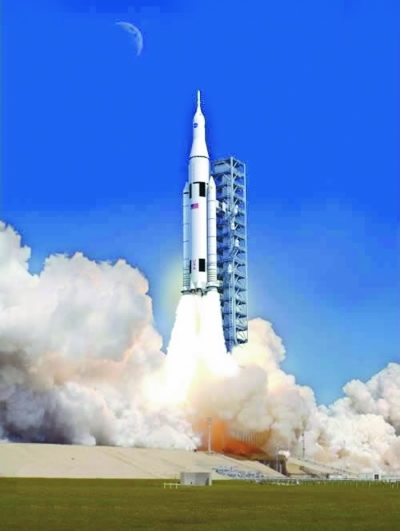China has officially started early explorations in the research and development of a heavy-lift launch vehicle. An important breakthrough has now been made in technical challenges of the rocket engine.
Research and development of the two kinds of high thrust engines is smoothly progressing, said Tan Yonghua, director of the Science and Technology Department, No.6 Research Institute of China Aerospace Science and Technology Corporation.
Wu Yanhua, the deputy director of China National Space Administration, said China's heavy-lift launch vehicle will be named Long March 9, and its first flight is planned for around 2030.

CFP Photo
Qin Xudong, director of the overall design department, No.1 Research Institute of China Aerospace Science and Technology Corporation, said the main research project is known as "One Overall Three Big."
“One Overall” relates to the optimization of the overall system, “Three Big" refers to the design, manufacturing and testing of big-caliber rockets; 480 tons of high-thrust (big power) liquid oxygen and kerosene engines and 220 tons of high-thrust (big power) hydrogen and oxygen engine.

"One Overall Three Big" illustrated and explained in detail. /Xinhua Photo
Compared to the five-meter diameter rocket Long March 5, heavy-lift launch vehicle Long March 9 is much more difficult to develop. It needs higher requirements, Qin Xudong indicated.
Tan Yonghua stated that the thrust of Long March 9 is designed to be greater than 3,000 tons, its carrying capacity at near-Earth orbit is more than 100 tons and its transferring capacity from the Earth to the Moon is greater than 50 tons, which meets the needs of a future manned lunar landing, Mars exploration and farther deep space exploration.
It is reported that world space powers have all restarted research and development of heavy-lift launch vehicles.
If Long March 9 can accomplish its first flight, the heavy-lift launch vehicle would likely become the world's largest carrying rocket.









